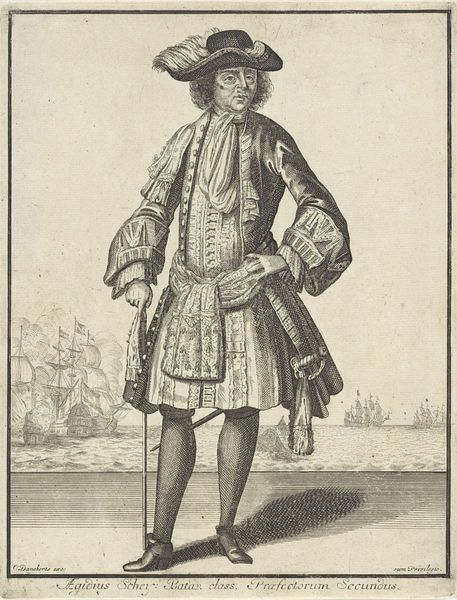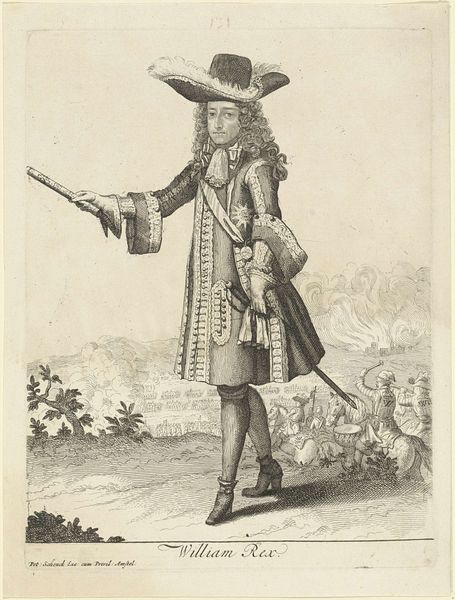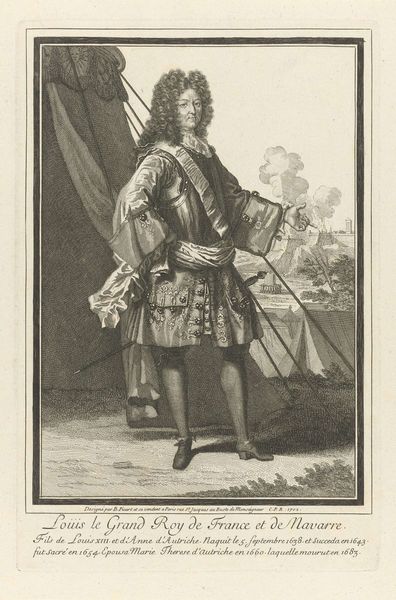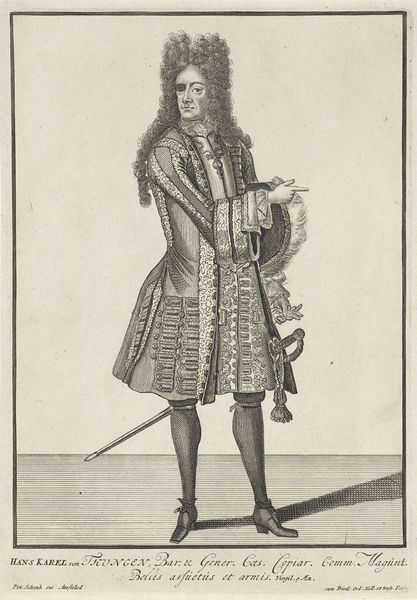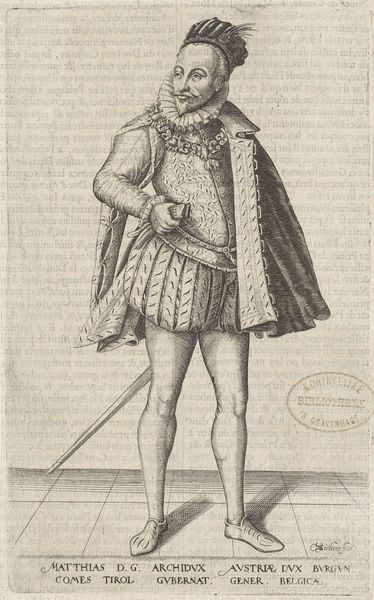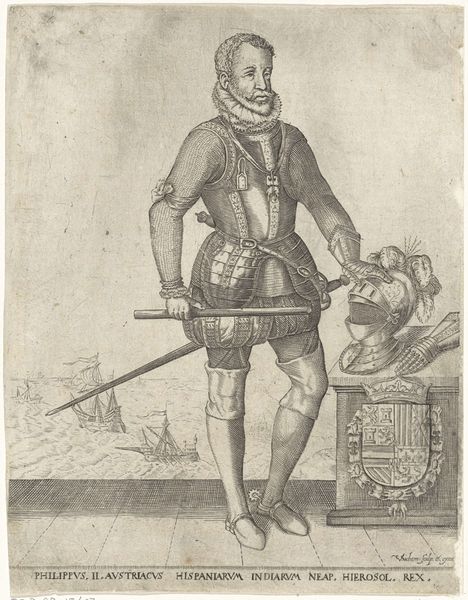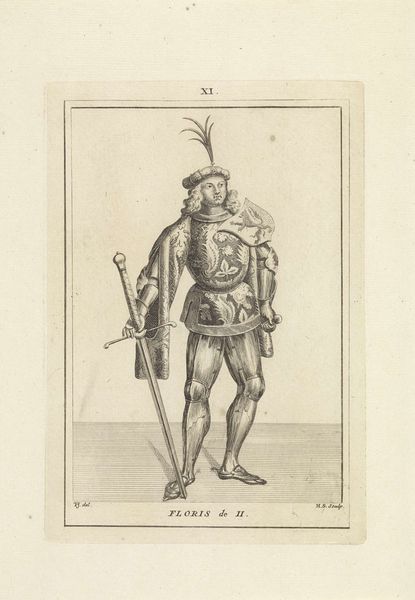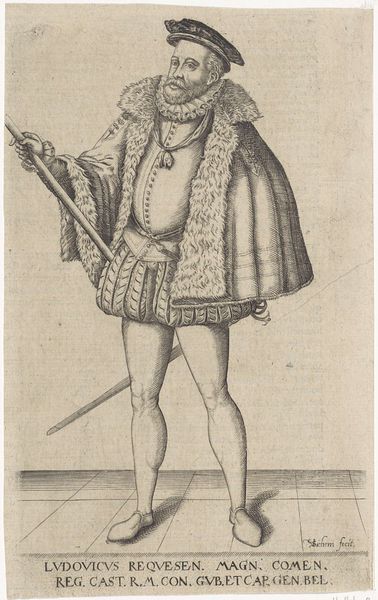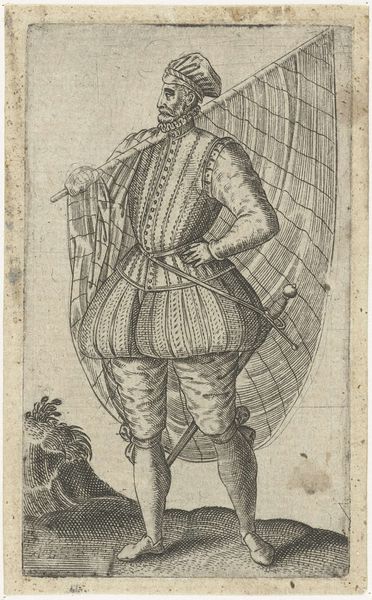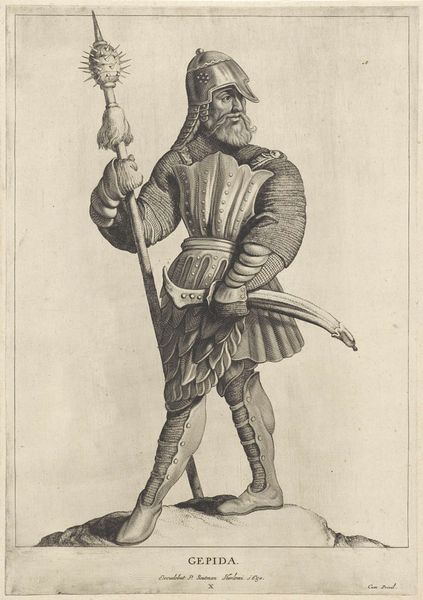
print, engraving
#
portrait
#
baroque
# print
#
old engraving style
#
figuration
#
pencil drawing
#
history-painting
#
engraving
Dimensions: height 249 mm, width 181 mm
Copyright: Rijks Museum: Open Domain
Curator: Here at the Rijksmuseum, we have Pieter Schenk’s “Portret van Gilles Schey,” an engraving dating between 1675 and 1711. My initial sense of it is one of formal representation—a very public depiction. What’s your take? Editor: It's striking how much power the image seems to convey. There's Schey in his extravagant garb, a pointed sword in hand, with warships engaging in a naval battle behind him, all captured in a very precise engraving style. However, his physical presence also seems... a bit uncomfortable, almost comical in the context of the war. Curator: It's true; the image embodies the Baroque era's taste for grand spectacle and display, meant to broadcast status and authority, right? Consider his ornate clothing, the commanding gesture, and the sea battle backdrop. These elements communicate a clear message about Schey’s power and martial prowess, whether or not it entirely succeeds. Editor: Definitely. But beyond that superficial display of dominance, I'm more interested in dissecting the layers of societal power. What position does this person really hold? What societal structures prop him up? Are we really meant to celebrate a single figure against the backdrop of what is, ultimately, suffering and conflict for the common person? Curator: Well, the Dutch Republic certainly faced intense maritime conflicts at that time. Schey, clearly a naval commander or at least affiliated with the navy given his surroundings and props, had a crucial position in that context. Perhaps the engraving romanticizes him a bit to create a figurehead, thus boosting public morale and underscoring the naval might of the nation? Editor: I suspect so. This portrait contributes to a constructed narrative, then—one that focuses on heroic masculinity. By visually associating Schey with military victories and leadership, Schenk helps entrench prevailing social hierarchies and obscure potentially unsettling realities related to military aggression and societal divisions. Curator: I’d agree there's a layer of propaganda inherent. But Schenk's skill lies in rendering the details meticulously; that’s part of what has kept this engraving intriguing across the centuries, irrespective of whatever message was initially being promoted. Editor: I think for me, analyzing the social motivations that influenced its commission, production, and initial reception, helps it remain relevant and powerful as an image. It provides insights into not only historical contexts, but ongoing debates related to class, power, and representation. Curator: Yes, placing the artwork inside its original social context is extremely insightful, helping us understand more accurately what the image would have meant to its original audience. Editor: Ultimately, engaging with pieces such as “Portret van Gilles Schey” invites crucial discussions about who holds influence, who gets memorialized, and how historical events get shaped and packaged through the production and display of art.
Comments
No comments
Be the first to comment and join the conversation on the ultimate creative platform.
